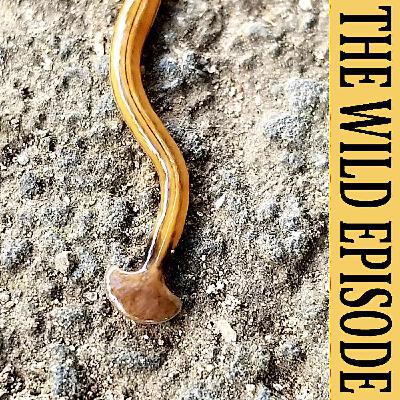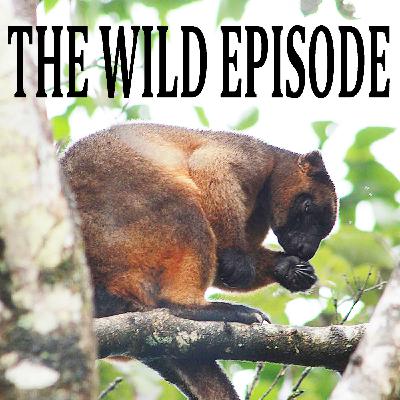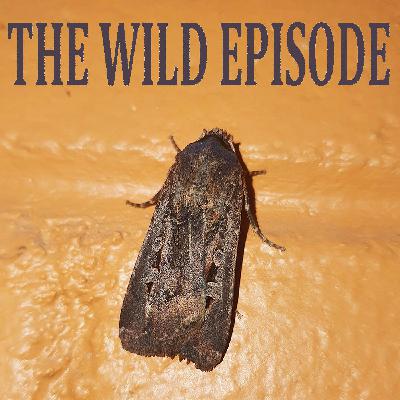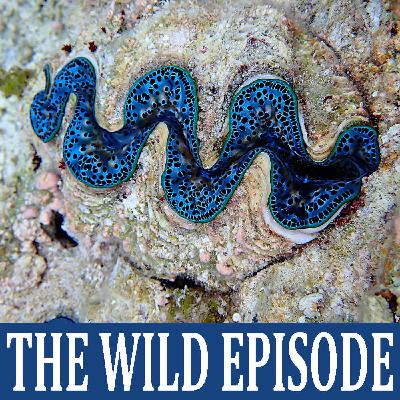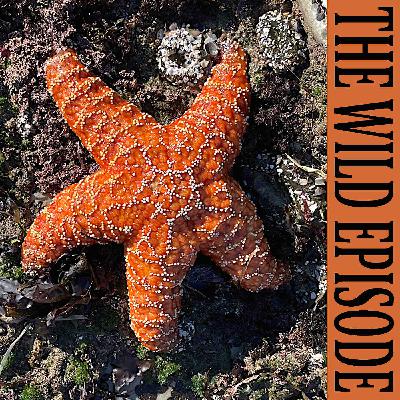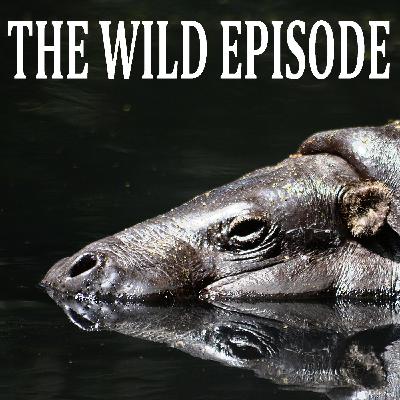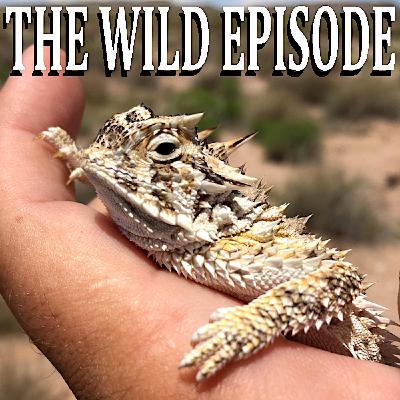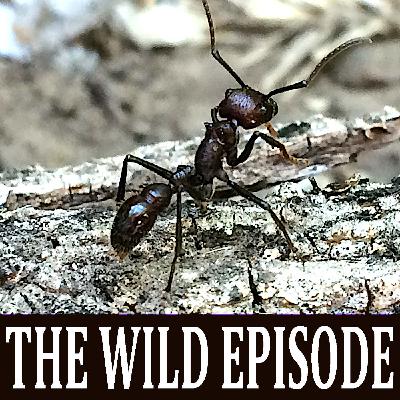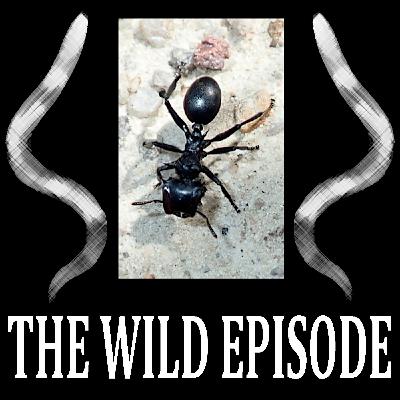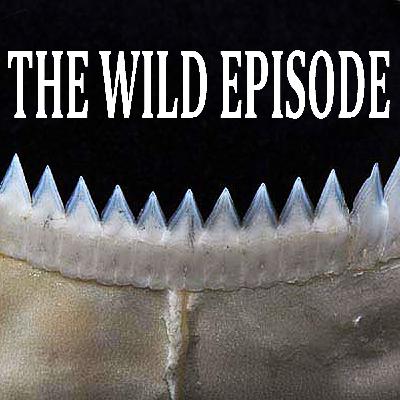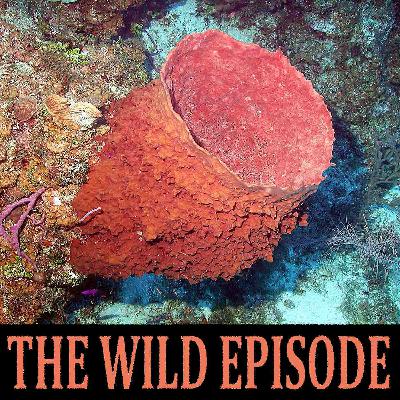Discover The Wild Episode
The Wild Episode

116 Episodes
Reverse
The Bigfin Squid (species of the genus Magnapinna) is one of the most iconic deep sea animals these days. But we know precious little about it - we can't even be 100% sure exactly what we're looking at when we capture footage of one of these amazing animals ... You can support the show - keep it going, keep it growing - and get additional content by subscribing at The Wild Episode Substack. Become a paid subscriber to get access to occasional bonus episodes. You don't have to pay anything, though - a free sign-up there will still get you regular content celebrating the wonders and curiosities of the Animal Kingdom. Show notes, with photos, video and links to lots more information, are available at thewildepisode.com Subscribe to the show to make sure you don't miss any future Wild Episodes, and e-mail your comments, corrections, suggestions or feedback to help make those future episodes better! You can also follow the show on Facebook or Twitter. Please share the show on social media, rate and review in your podcast app. That helps a lot. Or best of all, become a paid subscriber at The Wild Episode Substack. Thank you. Music Opening & Closing Themes: Running Waters and Acoustic Meditation by Audionautix (Jason Shaw), from audionautix.com. CC BY 3.0.
The Adélie penguin is the ultimate Antarctic penguin, partly because there's so many of them, partly because of its special and profound connection to Antarctic sea ice ... You can support the show - keep it going, keep it growing - and get additional content by subscribing at The Wild Episode Substack. Become a paid subscriber to get access to occasional bonus episodes. You don't have to pay anything, though - a free sign-up there will still get you regular content celebrating the wonders and curiosities of the Animal Kingdom. Show notes, with photos, video and links to lots more information, are available at thewildepisode.com Subscribe to the show to make sure you don't miss any future Wild Episodes, and e-mail your comments, corrections, suggestions or feedback to help make those future episodes better! You can also follow the show on Facebook or Twitter. Please share the show on social media, rate and review in your podcast app. That helps a lot. Or best of all, become a paid subscriber at The Wild Episode Substack. Thank you. Music Opening & Closing Themes: Running Waters and Acoustic Meditation by Audionautix (Jason Shaw), from audionautix.com. CC BY 3.0. Modified versions of: Äitienpäivä '22 and A Gentle Fog Descends by Brylie Christopher Oxley, cc by 4.0 ; Path to Solitude by Doxent, cc by 3.0
The Shovel-Headed Garden Worm, also known as the Hammerhead Worm, is a voracious, terrestrial predatory flatworm. A world-traveller with amazing anatomy, predatory abilities and - especially - reproductive capacity. But why is it named after Kew Gardens in London? You can support the show - keep it going, keep it growing - and get additional content by subscribing at The Wild Episode Substack. Become a paid subscriber to get access to occasional bonus episodes. You don't have to pay anything, though - a free sign-up there will still get you regular content celebrating the wonders and curiosities of the Animal Kingdom. Show notes, with photos, video and links to lots more information, are available at thewildepisode.com Subscribe to the show to make sure you don't miss any future Wild Episodes, and e-mail your comments, corrections, suggestions or feedback to help make those future episodes better! You can also follow the show on Facebook or Twitter. Please share the show on social media, rate and review in your podcast app. That helps a lot. Or best of all, become a paid subscriber at The Wild Episode Substack. Thank you. Music Opening & Closing Themes: Running Waters and Acoustic Meditation by Audionautix (Jason Shaw), from audionautix.com. CC BY 3.0. Modified versions of: 404 Not Found, But That's Okay and Echoes in the Code and Syncing Our Systems by Aldous Ichnite, CC BY 4.0
Lumholtz's Tree Kangaroo is one of only two species of tree kangaroo in Australia. Animals change, the world changes, the natural world is - almost - never standing still. You can support the show - keep it going, keep it growing - and get additional content by subscribing at The Wild Episode Substack. Become a paid subscriber to get access to occasional bonus episodes. You don't have to pay anything, though - a free sign-up there will still get you regular content celebrating the wonders and curiosities of the Animal Kingdom. Show notes, with photos, video and links to lots more information, are available at thewildepisode.com Subscribe to the show to make sure you don't miss any future Wild Episodes, and e-mail your comments, corrections, suggestions or feedback to help make those future episodes better! You can also follow the show on Facebook or Twitter. Please share the show on social media, rate and review in your podcast app. That helps a lot. Or best of all, become a paid subscriber at The Wild Episode Substack. Thank you. Music Opening & Closing Themes: Running Waters and Acoustic Meditation by Audionautix (Jason Shaw), from audionautix.com. CC BY 3.0. Modified versions of: A Perfect Storm and Paradisomala by Jon Shuemaker, CC BY 4.0; Magic Hour by Three Chain Links, CC BY 4.0; Short Song 030523 by Chris Zabriskie, CC BY 4.0
Every year, the Bogong Moth undertakes one of the most extraordinary insect migrations on Earth in south-eastern Australia. The question for this episode is: how? You can support the show - keep it going, keep it growing - and get additional content by subscribing at The Wild Episode Substack. Become a paid subscriber to get access to occasional bonus episodes. You don't have to pay anything, though - a free sign-up there will still get you regular content celebrating the wonders and curiosities of the Animal Kingdom. Show notes, with photos, video and links to lots more information, are available at thewildepisode.com Subscribe to the show to make sure you don't miss any future Wild Episodes, and e-mail your comments, corrections, suggestions or feedback to help make those future episodes better! You can also follow the show on Facebook or Twitter. Please share the show on social media, rate and review in your podcast app. That helps a lot. Or best of all, become a paid subscriber at The Wild Episode Substack. Thank you. Music Opening & Closing Themes: Running Waters and Acoustic Meditation by Audionautix (Jason Shaw), from audionautix.com. CC BY 3.0. Modified versions of: Echo, Into the Fire and Out of Reach by Philipp Weigl, CC BY 4.0; Temple and Lost and Found by drób, CC BY 4.0
There are several types of Supergiant Isopod in the deep sea - some of the most successful and effective scavengers on the planet. But why are they so very big? You can support the show - keep it going, keep it growing - and get additional content by subscribing at The Wild Episode Substack. Become a paid subscriber to get access to occasional bonus episodes. You don't have to pay anything, though - a free sign-up there will still get you regular content celebrating the wonders and curiosities of the Animal Kingdom. Show notes, with photos, video and links to lots more information, are available at thewildepisode.com Subscribe to the show to make sure you don't miss any future Wild Episodes, and e-mail your comments, corrections, suggestions or feedback to help make those future episodes better! You can also follow the show on Facebook or Twitter. Please share the show on social media, rate and review in your podcast app. That helps a lot. Or best of all, become a paid subscriber at The Wild Episode Substack. Thank you. Music Opening & Closing Themes: Running Waters and Acoustic Meditation by Audionautix (Jason Shaw), from audionautix.com. CC BY 3.0. Modified versions of: The Unfathomable Deep by Aldous Ichnite, CC BY 4.0; Dawn, Worship the Sun and Faith by Mark Wilson X, CC BY 3.0
The Giant Clam has a secret trick that enables it to grow faster and bigger than any other bivalve mollusc in the world ... You can support the show - keep it going, keep it growing - and get additional content by subscribing at The Wild Episode Substack. Become a paid subscriber to get access to occasional bonus episodes. You don't have to pay anything, though - a free sign-up there will still get you regular content celebrating the wonders and curiosities of the Animal Kingdom. Show notes, with photos, video and links to lots more information, are available at thewildepisode.com Subscribe to the show to make sure you don't miss any future Wild Episodes, and e-mail your comments, corrections, suggestions or feedback to help make those future episodes better! You can also follow the show on Facebook or Twitter. Please share the show on social media, rate and review in your podcast app. That helps a lot. Or best of all, become a paid subscriber at The Wild Episode Substack. Thank you. Music Opening & Closing Themes: Running Waters and Acoustic Meditation by Audionautix (Jason Shaw), from audionautix.com. CC BY 3.0. Modified versions of: DeepSpace by Audionautix (Jason Shaw), CC BY 3.0; Tired of Life, Please Wake Up and Away by Meydän, CC BY 4.0
The Giant Armadillo is easily the biggest living armadillo, equipped with the biggest claw on Earth. And the fact of its size means it is significant - valuable - to a surprisingly wide variety of other animals ... You can support the show - keep it going, keep it growing - and get additional content by subscribing at The Wild Episode Substack. Become a paid subscriber to get access to occasional bonus episodes. You don't have to pay anything, though - a free sign-up there will still get you regular content celebrating the wonders and curiosities of the Animal Kingdom. Show notes, with photos, video and links to lots more information, are available at thewildepisode.com Subscribe to the show to make sure you don't miss any future Wild Episodes, and e-mail your comments, corrections, suggestions or feedback to help make those future episodes better! You can also follow the show on Facebook or Twitter. Please share the show on social media, rate and review in your podcast app. That helps a lot. Or best of all, become a paid subscriber at The Wild Episode Substack. Thank you. Music Opening & Closing Themes: Running Waters and Acoustic Meditation by Audionautix (Jason Shaw), from audionautix.com. CC BY 3.0. Modified versions of: The Wake, Same Boat and Don't Close Your Eyes, by Josh Woodward, CC BY 4.0
The Harlequin Beetle-Riding Pseudoscorpion: a tiny predator with an extraordinary way of moving from one hunting ground to the next ... You can support the show - keep it going, keep it growing - and get additional content by subscribing at The Wild Episode Substack. Become a paid subscriber to get access to occasional bonus episodes. You don't have to pay anything, though - a free sign-up there will still get you regular content celebrating the wonders and curiosities of the Animal Kingdom. Show notes, with photos, video and links to lots more information, are available at thewildepisode.com Subscribe to the show to make sure you don't miss any future Wild Episodes, and e-mail your comments, corrections, suggestions or feedback to help make those future episodes better! You can also follow the show on Facebook or Twitter. Please share the show on social media, rate and review in your podcast app. That helps a lot. Or best of all, become a paid subscriber at The Wild Episode Substack. Thank you. Music Opening & Closing Themes: Running Waters and Acoustic Meditation by Audionautix (Jason Shaw), from audionautix.com. CC BY 3.0. Modified versions of: I Wanted to Live, You're Enough and Slow Lights by Lee Rosevere, CC BY 3.0
The Golden Rocket Frog - an amazing little frog that lives only in one small corner of South America and whose life revolves around the very specific architecture of one - also amazing - plant. You can support the show - keep it going, keep it growing - and get additional content by subscribing at The Wild Episode Substack. Become a paid subscriber to get access to occasional bonus episodes. You don't have to pay anything, though - a free sign-up there will still get you regular content celebrating the wonders and curiosities of the Animal Kingdom. Show notes, with photos, video and links to lots more information, are available at thewildepisode.com Subscribe to the show to make sure you don't miss any future Wild Episodes, and e-mail your comments, corrections, suggestions or feedback to help make those future episodes better! You can also follow the show on Facebook or Twitter. Please share the show on social media, rate and review in your podcast app. That helps a lot. Or best of all, become a paid subscriber at The Wild Episode Substack. Thank you. Music Opening & Closing Themes: Running Waters and Acoustic Meditation by Audionautix (Jason Shaw), from audionautix.com. CC BY 3.0. Modified versions of: Bait, Overgrown and Mindless by AvapXia, CC BY 4.0; Rain by Unheard Music Concepts, CC BY 4.0.
The Ochre Sea Star. A remarkable predator that can turn its stomach inside out through its mouth. And is also central to the story of a highly influential concept in ecology: it is the original Keystone Species ... You can support the show - keep it going, keep it growing - and get additional content by subscribing at The Wild Episode Substack. Become a paid subscriber to get access to occasional bonus episodes. Show notes, with photos, video and links to lots more information, are available at thewildepisode.com Subscribe to the show to make sure you don't miss any future Wild Episodes, and e-mail your comments, corrections, suggestions or feedback to help make those future episodes better! You can also follow the show on Facebook or Twitter. Please share the show on social media, rate and review in your podcast app. That helps a lot. Or best of all, become a paid subscriber at The Wild Episode Substack. Thank you. Music Opening & Closing Themes: Running Waters and Acoustic Meditation by Audionautix (Jason Shaw), from audionautix.com. CC BY 3.0. Modified versions of: Clothe the Fields With Plenty by Axletree, CC BY 4.0; Prelude No. 21, Prelude No. 18, Prelude No. 20 and Prelude No. 13 by Chris Zabriskie, CC BY 3.0
The Pygmy Hippo. An animal - one of them in particular - that's been all over social media recently. But what do we actually know about this species, how do we know it and why is there something unusual about the baby pygmy hippos born in zoos around the world? You can support the show - keep it going, keep it growing - and get additional content by subscribing at The Wild Episode Substack. Become a paid subscriber to get access to occasional bonus episodes. Show notes, with photos, video and links to lots more information, are available at thewildepisode.com Subscribe to the show to make sure you don't miss any future Wild Episodes, and e-mail your comments, corrections, suggestions or feedback to help make those future episodes better! You can also follow the show on Facebook or Twitter. Please share the show on social media, rate and review in your podcast app. That helps a lot. Or best of all, become a paid subscriber at The Wild Episode Substack. Thank you. Music Opening & Closing Themes: Running Waters and Acoustic Meditation by Audionautix (Jason Shaw), from audionautix.com. CC BY 3.0. Modified versions of: The Maze - NoVox by Josh Woodward, cc by 4 and Everywhere by Lee Rosevere, cc by 4.
The Texas Horned Lizard has solved a tricky problem: how to eat insects that not only have a powerful bite but also some of the most painful and lethal stings in the world ... You can support the show - keep it going, keep it growing - and get additional content by subscribing at The Wild Episode Substack. Become a paid subscriber to get access to occasional bonus episodes. Show notes, with photos, video and links to lots more information, are available at thewildepisode.com Subscribe to the show to make sure you don't miss any future Wild Episodes, and e-mail your comments, corrections, suggestions or feedback to help make those future episodes better! You can also follow the show on Facebook or Twitter. Please share the show on social media, rate and review in your podcast app. That helps a lot. Or best of all, become a paid subscriber at The Wild Episode Substack. Thank you. Music Opening & Closing Themes: Running Waters and Acoustic Meditation by Audionautix (Jason Shaw), from audionautix.com. CC BY 3.0. Modified versions of: Doppler Piano by Mark Wilson X, CC BY 4.0; Freeze and Build by AvapXia, CC BY 4.0
You can support the show - keep it going, keep it growing - and get additional content by subscribing at The Wild Episode Substack. Become a paid subscriber to get access to occasional bonus episodes. Show notes, with photos, video and links to lots more information, are available at thewildepisode.com Subscribe to the show to make sure you don't miss any future Wild Episodes, and e-mail your comments, corrections, suggestions or feedback to help make those future episodes better! You can also follow the show on Facebook or Twitter. Please share the show on social media, rate and review in your podcast app. That helps a lot. Or best of all, become a paid subscriber at The Wild Episode Substack. Thank you. Music Opening & Closing Themes: Running Waters and Acoustic Meditation by Audionautix (Jason Shaw), from audionautix.com. CC BY 3.0. Modified versions of: Doppler Piano by Mark Wilson X, CC BY 4.0; The Desert Archer by Pipe Choir III, CC BY 4.0; Lucid Coma by Kevin Hartnell, CC BY 4.0.
The infamous and fearsome (or not?) Bullet Ant. The first of three loosely connected episodes about ... pain. You can support the show - keep it going, keep it growing - by subscribing at The Wild Episode Substack. Become a paid subscriber to (if there's enough interest/support!) get access to occasional bonus episodes. Show notes, with photos, video and links to lots more information, are available at thewildepisode.com Subscribe to the show to make sure you don't miss any future Wild Episodes, and e-mail your comments, corrections, suggestions or feedback to help make those future episodes better! You can also follow the show on Facebook or Twitter. To support the show, please share on social media, rate and review in your podcast app. Or best of all, become a paid subscriber at The Wild Episode Substack. Thank you. Music Opening & Closing Themes: Running Waters and Acoustic Meditation by Audionautix (Jason Shaw), from audionautix.com. CC BY 3.0. Modified versions of: Doppler Piano, A Killer in Me, Ruminations and Terror Dome by Mark Wilson X, CC BY 4.0
Remipedes! Upside-down-swimming, venom-injecting, cave-dwelling amazingness. Some of the strangest crustaceans ever discovered, living in some of the strangest places the world has to offer. Show notes, with photos, video and links to lots more information, are available at thewildepisode.com Subscribe to the show to make sure you don't miss any future Wild Episodes, and e-mail your comments, corrections, suggestions or feedback to help make those future episodes better! You can also follow the show on Facebook or Twitter. To support the show, please share on social media, rate and review in your podcast app! Thank you. Music Opening & Closing Themes: Running Waters and Acoustic Meditation by Audionautix (Jason Shaw), from audionautix.com. CC BY 3.0. Modified versions of: Short Song 030223, Short Song 022723 and Short Song 022523 by Chris Zabriskie, CC BY 4.0 ; cinematic suspense series episode 004 and lost place atmospheres 001 by Sascha Ende, CC BY 4.0.
Ants that can glide and Myrmeconema, a parasitic nematode that can change the appearance and behaviour of its host. What happens when the two of them meet? Show notes, with photos, video and links to lots more information, are available at thewildepisode.com Subscribe to the show to make sure you don't miss any future Wild Episodes, and e-mail your comments, corrections, suggestions or feedback to help make those future episodes better! You can also follow the show on Facebook or Twitter. To support the show, please share on social media, rate and review in your podcast app! Thank you. Music Opening & Closing Themes: Running Waters and Acoustic Meditation by Audionautix (Jason Shaw), from audionautix.com. CC BY 3.0. Modified versions of: Distant Early Warning Line and Tropospheric Scatter by Aldous Ichnite, CC BY 4.0; and Crawling, The Other Side of Darkness and Played by Ear by Unheard Music Concepts, CC BY 4.0.
The Sumatran Rhino, the closest living relative of the extinct Woolly Rhinoceros, is the most vocal of all rhinos. This is the story of its extraordinary voice, and its journey through the twilight of the natural world ... Show notes, with photos, video and links to lots more information, are available at thewildepisode.com Subscribe to the show to make sure you don't miss any future Wild Episodes, and e-mail your comments, corrections, suggestions or feedback to help make those future episodes better! You can also follow the show on Facebook or Twitter. To support the show, please share on social media, rate and review in your podcast app! Thank you. Music Opening & Closing Themes: Running Waters and Acoustic Meditation by Audionautix (Jason Shaw), from audionautix.com. CC BY 3.0. Modified versions of: Pilgrimage - Contemplation and Pilgrimage - Inspiration by Wayne Kinos, CC BY 4.0; Mourn by Mark Wilson X, CC BY 4.0 and Ancient Rite by Kevin MacLeod, CC BY 4.0. Sumatran Rhino and Humpback Whale vocalizations are from the paper: Elizabeth von Muggenthaler, Paul Reinhart, Brad Lympany, R. Barton Craft; Songlike vocalizations from the Sumatran Rhinoceros (Dicerorhinus sumatrensis). ARLO 1 July 2003; 4 (3): 83–88
The Cookiecutter Shark is famous for its gruesomely efficient parasitic attacks on whales, seals and big fish. But that is only a part of the story when it comes to this extraordinary, and extraordinarily bright, shark ... Show notes, with photos, video and links to lots more information, are available at thewildepisode.com Subscribe to the show to make sure you don't miss any future Wild Episodes, and e-mail your comments, corrections, suggestions or feedback to help make those future episodes better! You can also follow the show on Facebook or Twitter. To support the show, please share on social media, rate and review in your podcast app! Thank you. Music Opening & Closing Themes: Running Waters and Acoustic Meditation by Audionautix (Jason Shaw), from audionautix.com. CC BY 3.0. Modified versions of: Icy Interlude [feat. Mystified], Uncertainty and Left Behind by Nova Beat Estate, CC BY 4.0; Lightless Dawn by Kevin Macleod (incompetech.com), CC BY 4.0.
The Giant Barrel Sponge: one of the simpler animals on Earth yet grows to enormous size over a crazily long life, exerts a big influence on reef ecosystems and, unlike a great many animals in our oceans, seems to be thriving ... Show notes, with photos, video and links to lots more information, are available at thewildepisode.com Subscribe to the show to make sure you don't miss any future Wild Episodes, and e-mail your comments, corrections, suggestions or feedback to help make those future episodes better! You can also follow the show on Facebook or Twitter. To support the show, please share on social media, rate and review in your podcast app! Thank you. Music Opening & Closing Themes: Running Waters and Acoustic Meditation by Audionautix (Jason Shaw), from audionautix.com. CC BY 3.0. Modified versions of: Equatorial Complex by Kevin Macleod (incompetech.com), CC BY 4.0; Short Song 011123, Short Song 011023 and Short Song 011323 by Chris Zabriskie, CC BY 4.0.




